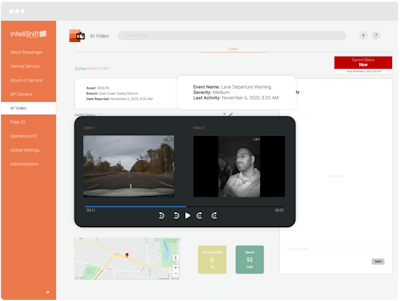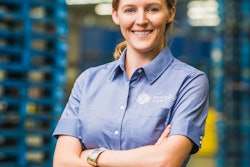
Prior to the Coronavirus disease (COVID-19) pandemic, many companies began looking for advanced, real-time insight into their operations to inform critical business decisions and improve their bottom lines. Across the food and beverage industry, this remained especially true, with organizations embracing advanced analytics to enhance processes and deliver a heightened customer experience. As companies have adjusted to the current climate, adoption has skyrocketed, with many looking beyond traditional telematics technologies.
Instead, many food and beverage organizations are implementing advanced, connected operations solutions that help seamlessly collect and analyze in-the-moment, actionable insights to better manage their mobile workforce and assets, and efficiently deliver on all customer expectations. Today, as it’s more important than ever that companies ensure that their goods arrive to customers on-time and protected, they must be able to adapt and respond quickly to evolving customer needs and stay ahead of day-to-day challenges. To do so, many are successfully leveraging real-time, integrated data from their end-to-end operation to make informed decisions that boost profitability, promote safety and satisfy their customers.
Optimizing routes and reducing fuel costs
As food and beverage companies continue to search for ways to improve processes and enhance customer satisfaction, many are implementing advanced technology solutions to ensure strategic, agile responses to customer needs. In today’s current climate, organizations need to be agile enough to adapt to new challenges or requirements and evolving situations at all levels of the organization. Now with access to real-time, integrated data, both strategic and tactical decision makers will be able to automatically derive meaningful insights using connected operations technology.
To get goods to customers in the most efficient and safest manner, fleet operators are using data to transform processes, such as determining optimal routes. With artificial intelligence (AI)-based route optimization technology, companies can automate routing, which saves planning and delivery time, as well as fuel and wage costs and wear-and-tear on vehicles. Taking traffic, road conditions, hazardous weather, tolls and delivery times into account, advanced connected technologies are enabling teams to better manage daily routes quickly and easily to reduce drive time, respond to in-the-moment changes and lower operational costs. Now, with access to real-time and predictive data, fleet managers can better serve their customers while optimizing their operational ROI.
Managing cold chains to avoid spoilage, contamination and loss
Another critical component food and beverage companies must always consider is how to ensure accurate temperature control to avoid spoilage and contamination during deliveries. As an essential aspect of food and beverage delivery, many are turning to sophisticated temperature monitoring through connected data and deep analytics.
Today, there are some very sophisticated, yet easy and cost-effective ways to help with temperature management. With these connected operations solutions, food and beverage companies can monitor cargo temperature to guarantee it stays within the industry mandated range, while also helping to boost customer satisfaction and amp up profitability. With built-in sensor technologies, companies can receive real-time alerts of temperature fluctuations, helping to reduce spoilage and chances of cargo rejections and expensive spoilage claims, eliminate re-delivery costs, prevent product shortage and loss and ensure regulation and contractual compliance. In addition, with traceability capabilities, these solutions can help operations managers gain end-to-end visibility into their entire supply chains, helping to prevent irreversible damage, loss or theft.
Promote safe driving, reduce risk and decrease maintenance costs
In addition to optimized routing and temperature control and monitoring, advanced solutions are also helping organizations run holistic safety programs that not only maximize safety and compliance but also reduce costs. A full spectrum, digitally managed safety and compliance program will integrate inspections and safety protocols, driver scorecards, AI video, engine diagnostics, proactive maintenance and ELDs for recording Hours of Service, allowing organizations to do as much as they can -- with less manual effort -- to prevent issues. And, bonus, they’ll have the data and visibility to run a more proactive maintenance program.
With access to a wide range of real-time data, fleet managers and drivers can receive live alerts, enabling them to instantly pinpoint and modify unsafe behavior before it’s too late. Managers can also implement holistic safety training programs capture accurate footage of incidents, helping to protect drivers in case of an accident and safeguard against potentially fraudulent claims and frivolous lawsuits. And with an integrated safety and compliance program, you’ll be able to reduce maintenance needs and associated costs by encouraging a shift in driving behaviors as well as getting ahead of any small maintenance needs before the snowball into costly issues.
Transforming operations
While every company is different, it’s evident that with the help of advanced, connected solutions, operations managers across the food and beverage industry can assure their processes are both effective and designed to fulfill customer needs. To boost customer satisfaction, while keeping operational costs and driver safety in mind, data-driven technologies can help organizations see unmatched value, helping to optimize routes to reduce fuel spend, manage cold chains to avoid products loss and promote safe driving to reduce risks and decrease maintenance costs.



















